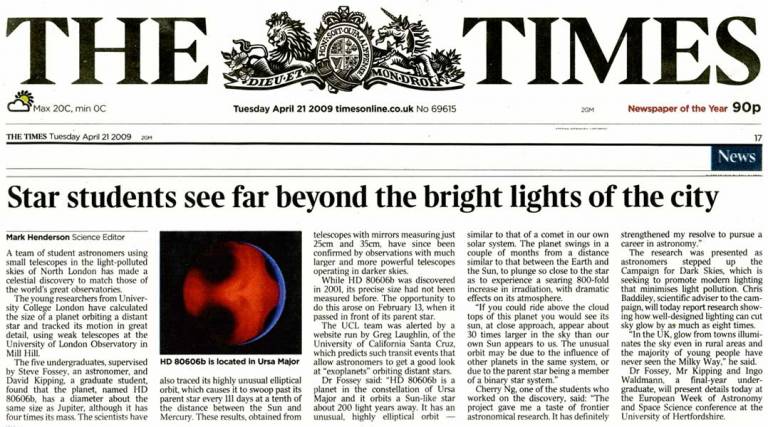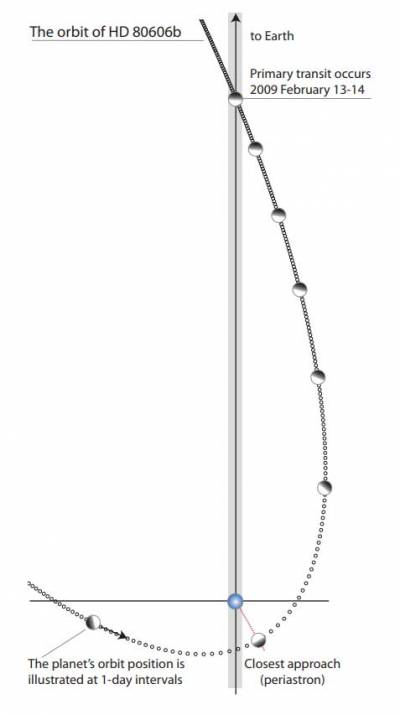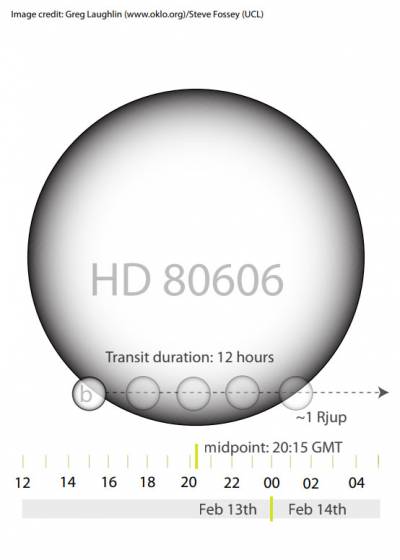All the Dead Stars
UCL Slade School graduate Katie Paterson and Professor Ofer Lahav discuss the nature of `dead' stars.
Katie Paterson's latest work is a map of `dead stars' - 27,000 that have so far been observed and recorded. Her work was featured in the Altermodern exhibition at Tate Britain.
Visit www.tate.org.uk/tateshots/ to see Katie and Ofer at UCLO discussing her work.
Exocafe Review: Wed June 3
Dr. Steve Fossey is organising an event at UCLO to review the progress and future of the ExoCafe project, an undergraduate exoplanet-monitoring project which has been running over the last year.
The event will take place from 1430 on Wednesday, June 3, at UCLO. It will be followed by an informal reception, with refreshments, from about 1730.
The afternoon will consist of a few talks on the science of extrasolar planets, information on undergraduate opportunities for observing over the summer, and other ways to contribute to the ExoCafe project. There should be lots of opportunity for informal discussion.
UCL students interested in attending should send an email to Steve Fossey (sjf AT ulo.ucl.ac.uk).
Some more information about ExoCafe is given here.
UCLO in the news: HD 80606b
The RAS has issued a press release on the observation of a planetary transit of HD 80606b, made by UCL undergraduates at UCLO on Feb 13-14.
The story has been picked up by several news media, including:

- BBC News (29/04/2009)
- The Times Online (21/04/2009)
- Science Daily (22/04/2009)
- Science Centric (22/04/2009)
More news and information about HD 80606b and the discovery of its transit can be found at:
- UCL news article
- ‘Sky and Telescope’ article
- ‘Nature news’ article
- MNRAS Letters on-line paper by Steve Fossey, Ingo Waldmann and Dave Kipping
- arXiv.org paper
- Greg Laughlin's website: oklo.org
For more information on the HD 80606b story, contact Steve Fossey (sjf AT ulo.ucl.ac.uk).
Press-release images of HD 80606b
For press-release images related to HD 80606b, see below; click on the thumbnails and links to access higher-resolution images.

Plan view of the orbit of HD 80606b.
The position of the planet is shown at 1-day intervals, close to the moment of close approach (periastron), where the high eccentricity of the orbit brings the planet 10 times closer to its parent star than Mercury's close approach to our own Sun. The primary transit occurs when the planet moves into the line of sight to the star, as viewed from Earth, and was observed by UCL astronomers and students on the night of Feb. 13/14, 2009.
Credit: S. Fossey (UCL)/G. Laughlin (Univ. California at Santa Cruz)

The observations made by the UCL team were able to demonstrate that HD 80606b is about the same size of Jupiter, and that the transit was almost grazing - that is, it crossed the line of sight from Earth quite close to the limb of the star. Although it was only possible to capture about 8 hours of the full transit from UCLO, it was concluded that the total transit was about 12 hours long.
Credit: G. Laughlin (Univ. California at Santa Cruz)/S. Fossey (UCL)
Steve Fossey, 16 April 2009 For more information, email: sjf AT ulo.ucl.ac.uk
 Close
Close

